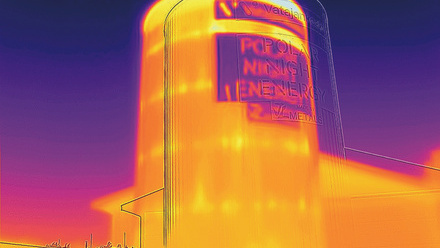Wear and corrosion-resistant high-entropy alloys
Dr Michael Ford MIMMM at Haseltine Lake Kempner explores a patent for wear and corrosion-resistant high-entropy alloys.

Many industries rely on the use of machine components, such as cutting tools or drills, requiring high hardness and wear resistance. At present, such components are commonly made of iron-based alloys like tool steels, manganese steels or white cast iron.
Through the mechanisms of precipitation or deformation hardening, excellent wear-resistance properties can be achieved. However, these materials often suffer from poor corrosion resistance and can be prone to crack formation when components are subjected to hardening heat treatments. These disadvantages can render the materials unsuitable for use in harsh (e.g. marine or chemical) environments and can reduce component service life.
In June 2023, however, a European patent EP3670684B1 on High wear resistant high entropy alloy and preparation thereof was granted to Casa Maristas Azterlan, a private metallurgy research centre based in the Basque region of Spain. It describes high-entropy alloys that appear to combine both good hardness and corrosion-resistant properties, making them suitable for use in hazardous conditions.
Traditional metal alloys typically contain only one or two base elemental components (e.g. iron in the case of steel, or copper and zinc in the case of brass), to which alloying elements may be added in minor amounts.
In contrast, high-entropy alloys combine multiple elements in roughly equal, or at least relatively large, proportions. Such contemporary multi-component alloys have been found to exhibit different thermodynamic behaviours and physical properties than might be expected by applying conventional alloying rules developed from the study of binary or ternary.
For instance, some high-entropy alloys have been found to form substitutional solid solutions even though the Hume-Rothery rules might predict phase separation due to differences in elemental crystal structure. Others have shown high yield strengths at temperatures of up to 1,400°C, or the absence of a ductile-to-brittle transition in tests as low as 77K.
EP3670684B1 claims protection for an as-cast high-entropy alloy with a chemical composition consisting of 5.0-20wt.% chromium, 10.0-25wt.% manganese, 0.2-30wt.% silicon, 0.2-6.0wt.% iron, less than or equal to 0.03wt.% phosphorus, and less than or equal to 0.03wt.% sulphur, with a balance of nickel and unavoidably impurities. The alloy has a dual-phase microstructure consisting of first and second face-centred cubic phases, where the first phase has a higher nickel content and lower content of silicon, manganese and chromium than the second phase.
According to the patent, high-entropy alloys meeting this definition exhibit advantageously high hardness and high wear resistance, combined with good corrosion resistance, making them suitable for use in the presence of corrosive solutions such as salt water, acid or alkali.
The two microstructural phases present in the alloy (described as a light grey phase and a dark grey phase in the patent, due to contrast under a scanning electron microscope) were found to have significantly different lattice constants (3.59Å versus 6.68Å) leading the inventors to posit that severe distortions of the crystalline network are behind an increased wear resistance as compared to single-phase alloys.
The inventors also provide experimental results that indicate that the alloy’s hardness increases exponentially with increasing silicon content. The hardness was found to increase even further when the as-cast alloy was subjected to a heat treatment at 900°C for two hours, regardless of whether water or calm air cooling was used after heating.
According to the inventors, the results indicate that heat treatment leads to greater dark grey phase precipitation, which is believed to cause more crystalline network distortion and thus improved hardness and wear resistance. The patent therefore also claims protection for a heat-treated high-entropy alloy with the above-defined composition and achieving a hardness value equal to or greater than 730HV.
In the patent, corrosion resistance was tested in a salt spray chamber following standard UNE EN-ISO 9227:2007, with no evidence of surface corrosion being found after 648h of exposure. In contrast, a sample of commercial stainless-steel alloy AISI 347 showed corrosion after just 48h of testing.
The patent also describes and claims a suitable manufacturing method in which the pure elements are melted together in a furnace and then the resulting composition is cast in a mould. Magnesium is used as a deoxidising agent and the surface of the molten metal is protected using a slag coagulation flux. The metal is maintained in the molten condition in the furnace at a temperature of 1,300-1,500°C for homogenisation purposes.
According to the patent, the combination of wear resistance and corrosion resistance achieved means that both the as-cast and heat-treated alloys are suitable for use in manufacturing parts, including machine tools, grinding balls, wear covers, turbine blades, high wear- and corrosion-resistant valves and pipes, propellers, and movement elements of shot blasting and mining equipment.







